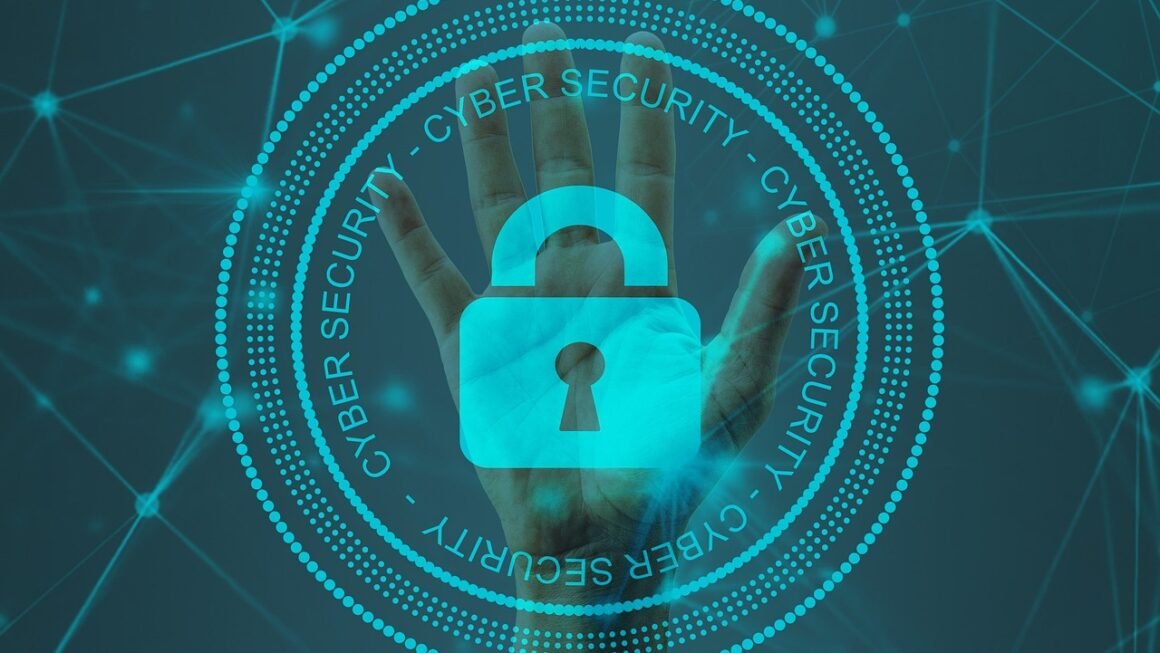Protecting digital assets and ensuring user privacy are paramount in today’s interconnected world. Authentication, the process of verifying a user’s identity, stands as the first line of defense against unauthorized access and potential security breaches. Understanding different authentication methods and their implementations is crucial for developers, system administrators, and anyone involved in managing online systems. This article delves into the world of authentication, exploring various techniques, best practices, and considerations for secure and reliable identity verification.
What is Authentication?
Authentication is the process of verifying that a user, device, or application is who or what it claims to be. It confirms the identity of an entity trying to access a system, network, or resource. Unlike authorization, which determines what an authenticated user can access, authentication focuses solely on verifying their identity.
Why is Authentication Important?
Strong authentication is essential for several reasons:
- Security: It prevents unauthorized access to sensitive data and systems, mitigating the risk of data breaches, identity theft, and other malicious activities.
- Trust: It builds trust between users and service providers by assuring users that their information and interactions are secure.
- Compliance: Many regulations, such as GDPR and HIPAA, require organizations to implement robust authentication measures to protect user data.
- Accountability: Authentication enables tracking and auditing of user activities, ensuring accountability for actions performed within a system.
- Data Protection: By restricting access to authorized users, authentication helps protect the integrity and confidentiality of data.
Common Authentication Factors
Authentication factors are the different types of credentials used to verify a user’s identity. These factors are often categorized into three main groups:
- Knowledge Factors (Something you know): This includes passwords, PINs, security questions, and passphrases. This is the most common, but also the least secure, factor.
Example: Entering your password to log into your email account.
- Possession Factors (Something you have): This involves physical or digital tokens, such as smart cards, security keys (like YubiKey), one-time passwords (OTPs) generated by an app or SMS, or even your registered device.
Example: Using a security key plugged into your computer to verify your login.
- Inherence Factors (Something you are): This relies on biometric data, such as fingerprints, facial recognition, voice recognition, or retinal scans.
Example: Using facial recognition to unlock your smartphone.
Single-Factor Authentication (SFA)
Single-factor authentication (SFA) uses only one authentication factor to verify a user’s identity. Typically, this factor is a password.
Limitations of Single-Factor Authentication
SFA is the simplest form of authentication but also the most vulnerable. Relying solely on a password poses significant risks:
- Password Cracking: Passwords can be cracked through various methods, including brute-force attacks, dictionary attacks, and phishing.
- Password Reuse: Users often reuse passwords across multiple accounts, making them vulnerable to credential stuffing attacks.
- Shoulder Surfing: Passwords can be compromised by simply observing someone typing their password.
- Phishing: Users can be tricked into revealing their passwords through phishing emails or fake websites.
Best Practices for Password Management in SFA
While SFA is generally discouraged, if it’s unavoidable, following these best practices is crucial:
- Strong Passwords: Enforce strong password policies that require a combination of uppercase and lowercase letters, numbers, and special characters.
- Password Length: Encourage users to create passwords that are at least 12 characters long.
- Password Complexity: Avoid using easily guessable words, names, or dates in passwords.
- Regular Password Updates: Encourage users to change their passwords regularly.
- Password Managers: Recommend the use of password managers to generate and store strong, unique passwords for each account.
- Security Questions (Use With Caution): If security questions are used, choose questions with less predictable answers and treat the answers as sensitive information.
Multi-Factor Authentication (MFA)
Multi-factor authentication (MFA) requires users to provide two or more authentication factors to verify their identity. This significantly enhances security by adding layers of protection.
Benefits of Multi-Factor Authentication
MFA offers numerous advantages over SFA:
- Enhanced Security: It makes it much harder for attackers to gain unauthorized access, even if they obtain a user’s password.
- Reduced Risk of Data Breaches: MFA can prevent data breaches by blocking access from compromised accounts.
- Compliance Requirements: Many regulatory standards require MFA for sensitive data protection.
- Increased Trust: It builds trust with users by demonstrating a commitment to security.
- Protection Against Phishing: Even if a user falls for a phishing scam, MFA can prevent attackers from gaining access to their account.
Types of Multi-Factor Authentication
MFA can be implemented using various combinations of authentication factors:
- Two-Factor Authentication (2FA): The most common type of MFA, using two factors. Example: Password + SMS code.
- SMS-Based Authentication: Sends a one-time password (OTP) to the user’s mobile phone via SMS. This is being phased out due to security concerns.
- Authenticator Apps: Uses an app like Google Authenticator, Authy, or Microsoft Authenticator to generate OTPs. This is more secure than SMS.
- Hardware Tokens: Uses a physical device, such as a YubiKey, to generate OTPs or provide cryptographic authentication.
- Biometric Authentication: Uses fingerprint scanners, facial recognition, or other biometric methods.
Implementing Multi-Factor Authentication
When implementing MFA, consider the following:
- User Experience: Choose MFA methods that are user-friendly and do not create excessive friction.
- Security: Select MFA methods that offer strong security and are resistant to common attacks.
- Cost: Evaluate the cost of implementing and maintaining different MFA solutions.
- Compliance: Ensure that the chosen MFA methods meet relevant compliance requirements.
- Backup Options: Provide backup options for users who lose access to their primary MFA device. Example:* Backup codes.
Biometric Authentication
Biometric authentication uses unique biological characteristics to verify a user’s identity. It offers a convenient and secure alternative to traditional password-based authentication.
Types of Biometric Authentication
Common biometric authentication methods include:
- Fingerprint Scanning: Uses fingerprint scanners to capture and analyze unique fingerprint patterns.
- Facial Recognition: Uses cameras to capture and analyze facial features.
- Voice Recognition: Uses microphones to capture and analyze voice patterns.
- Retinal Scanning: Uses specialized scanners to capture and analyze the unique patterns of blood vessels in the retina.
- Iris Scanning: Uses specialized scanners to capture and analyze the unique patterns of the iris.
Advantages of Biometric Authentication
Biometric authentication offers several benefits:
- Enhanced Security: Biometric data is difficult to forge or steal.
- Convenience: Biometric authentication is often faster and easier than typing passwords.
- Non-Repudiation: Biometric data is uniquely tied to an individual, providing strong evidence of identity.
Considerations for Biometric Authentication
While biometric authentication offers advantages, there are also some considerations:
- Privacy Concerns: Collecting and storing biometric data raises privacy concerns.
- Accuracy: Biometric systems are not always 100% accurate and can produce false positives or false negatives.
- Spoofing: Biometric systems can be vulnerable to spoofing attacks, where attackers use fake biometric data to gain access.
- Cost: Biometric authentication systems can be expensive to implement and maintain.
- Data Storage: Secure storage and encryption of biometric data is critical to prevent misuse.
Passwordless Authentication
Passwordless authentication is a method of verifying a user’s identity without requiring them to enter a password. It offers a more secure and user-friendly alternative to traditional password-based authentication.
Types of Passwordless Authentication
Common passwordless authentication methods include:
- Magic Links: Sends a unique link to the user’s email address, which they can click to log in.
- One-Time Passcodes (OTP): Sends an OTP to the user’s phone via SMS or authenticator app.
- Biometric Authentication: Uses fingerprint scanners or facial recognition to verify identity.
- Push Notifications: Sends a push notification to the user’s mobile device, which they can approve to log in.
- Security Keys: Uses a physical security key, such as a YubiKey, to provide cryptographic authentication.
Benefits of Passwordless Authentication
Passwordless authentication offers several advantages:
- Improved Security: Eliminates the risk of password-related attacks, such as phishing and brute-force attacks.
- Enhanced User Experience: Simplifies the login process and reduces the need to remember complex passwords.
- Reduced Help Desk Costs: Eliminates the need for password resets, reducing help desk workload.
- Compliance Requirements: Can help meet compliance requirements for strong authentication.
Implementing Passwordless Authentication
When implementing passwordless authentication, consider the following:
- User Education: Educate users about the benefits of passwordless authentication and how to use it.
- Security: Choose passwordless authentication methods that offer strong security and are resistant to common attacks.
- Backup Options: Provide backup options for users who lose access to their primary passwordless authentication device.
- Integration: Ensure that the chosen passwordless authentication method integrates seamlessly with existing systems.
Conclusion
Authentication is a critical aspect of cybersecurity, ensuring that only authorized users gain access to sensitive data and systems. By understanding different authentication methods, including SFA, MFA, biometric authentication, and passwordless authentication, organizations can implement robust security measures that protect their assets and build trust with their users. As technology evolves, staying informed about the latest authentication techniques and best practices is essential for maintaining a strong security posture in an ever-changing digital landscape. Choosing the right authentication strategy can significantly improve overall security and user experience, contributing to a safer and more reliable online environment.



